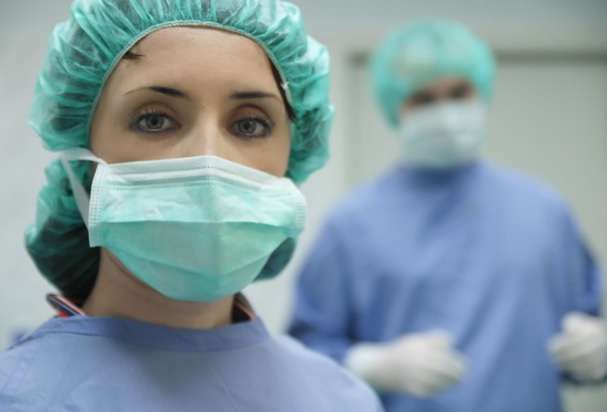Plastic surgery is more popular than ever among self-conscious Americans. According to the latest report from the American Society of Plastic Surgeons (ASPS), more than 15.1 million cosmetic surgery interventions were performed in 2013, and the number includes both minimally-invasive and invasive.
Regarding reconstructive surgery procedures, the numbers show an increase of 2 percent from last year, amounting to 5.7 million interventions.
Why the sudden growth?
The same report points out to advances in technology and new products as the two main reasons accounting for plastic surgery growth last year, trend that’s expected to keep on growing as new products and technologies penetrate the market.
For example, two innovative products, form-stable silicone gel breast implants and a new type of hyaluronic acid filler targeting mid-face volume loss, have been approved by the FDA in 2013 and are now available to the public.
In 2013, the top cosmetic surgical procedures were:
- Breast augmentation – up 1% to 290,000 procedures
- Rhinoplasty – down 9% to 221,000 procedures
- Eyelid surgery – up 6% to 216,000 procedures
- Liposuction – down 1% to 200,000 procedures
- Facelift – up 6% to 133,000 procedures
In breast augmentation procedures, there was a clear shift from saline implants – preferred by only 28 percent of patients – to silicone implants, used in 72 percent of all breast enhancement interventions. The form-stable silicone implants, shaped like natural breasts, and also fat transfer to the breast, were two very popular tendencies observed in 2013.
Regarding minimally-invasive cosmetic procedures, there was an increase of 3 percent, totaling 13.4 million procedures in 2013. Among them, the top five were Botox injections, soft tissue fillers, laser hair removal, chemical peels, and microdermabrasion.
ASPS President Robert X. Murphy, MD, said “The demand for plastic surgery remains strong, with our statistics showing increases in both cosmetic surgical and minimally-invasive procedures.
Facial rejuvenation procedures were especially robust last year, with more Americans opting for facelifts, forehead lifts, eyelid surgery, fillers and peels. With new devices and products hitting the market each year, there are more options and choices available to consumers wanting to refresh their look or a little nip and tuck.”
Eyelid Surgery Improves Quality of Life, Study Suggests
In a paper presented a few years ago at the American Academy of Otolaryngology – Head and Neck Surgery Foundation (AAO-HNSF) Annual Meeting in San Diego, scientists presented the results of a questionnaire survey they performed on 26 adult patients who underwent bilateral upper and lower lid surgery, technically called blepharoplasty.
The targeted segment was that of patients undergoing eyelid surgery purely for cosmetic reasons – those who did it for medical reasons, or patients who underwent several cosmetic procedures in addition to eyelid surgery, were excluded from the questionnaire.
It was revealed that blepharoplasty had a positive impact on the quality of life of nearly every person who received this type of procedure (as measured by the Glasgow Benefit Inventory (GBI)). The researchers who conducted the interviews noted that most patients felt better about their physical appearance and, as a result, had improved their confidence and self-esteem. The study is the first to confirm the benefits of eyelid surgery on the patients’ quality of life.
Stay on the Safe Side: Use Licensed Surgeons
As with numerous cosmetic procedures, there are a lot of unlicensed, “would-be” doctors eager to perform cosmetic surgery on unaware patients. For instance, in Tennessee, legislation pending the Tennessee General Assembly SB220/HB555 wants to allow optometrists – who have no surgical residency training whatsoever – to perform eyelid surgery using injectable anesthesia.

The passage of this law will remove the current restriction that allows only board-licensed medical doctors to perform invasive procedures using injectable anesthesia, allowing non-specialists to also perform it.
Of course, the large majority of Tennesseans oppose this measure: according to the results of a recent poll conducted by Southern Media & Opinion Research, 85 percent of those surveyed strictly oppose eyelid surgery requiring local anesthesia to be performed by non-M.D.s. The same percentage agreed that patients undergoing eyelid surgery deserve the best care possible provided,not by any doctor who can make the cut, but by trained surgeons specialized in this type of procedure.
Most of those interviewed also believed that having the procedure performed by a board-licensed surgeon is more important than location or cost of the procedure, while 76 percent strongly expressed their position to maintain the authority Tennessee Board of Medical Examiners in regulating professionals performing these operations.
Medical Doctors vs. Board-Certified Plastic Surgeons
Ultimately, there are countless benefits to resorting to a board-certified plastic surgeon. Here are some of the most important, as mentioned by authority website surgery.org:
- Plastic surgeons specialize in performing surgeries. Although it may appear redundant, very few of the 24 medical specialties recognized by the American Board of Medical Specialties include surgical training.
- The training plastic surgeons undergo includes both technical skills and esthetic judgment, and the years they spend performing complex operations allow them to specialize in both form and function, ensuring the success of the intervention especially when balance and proportion are key aspects.
- Plastic surgeons are trained to handle emergencies efficiently. Being also trained in anatomy and physiology, they have a clear understanding of the human body and its reactions, therefore,can promptly handle all eventual problems that may pose a risk to the patient’s well-being.
- Plastic surgeons are specialized in both facial and body interventions. In order to become board-certified, they must complete a 5-year training in general surgery and 2-3 years in their chosen specialty.
- Board-certified surgeons have knowledge and access of a wide range of treatments, sometimes crucial in addressing patient concerns or complications. Being trained in handling a wide variety of devices and technologies, plastic surgeons are also able to provide patients with more than one option when it comes to their treatment, and thus ensure the best possible outcome.
Hopefully, with the proliferation of affordable technologies and more reports revealing the dangers of resorting to back-alley “would-be” doctors who use non-medical grade equipment, more people will understand the crucial importance of having their bodies altered by trained and experienced specialists.
Editor note, 5.12.2016 – backlink removed









































